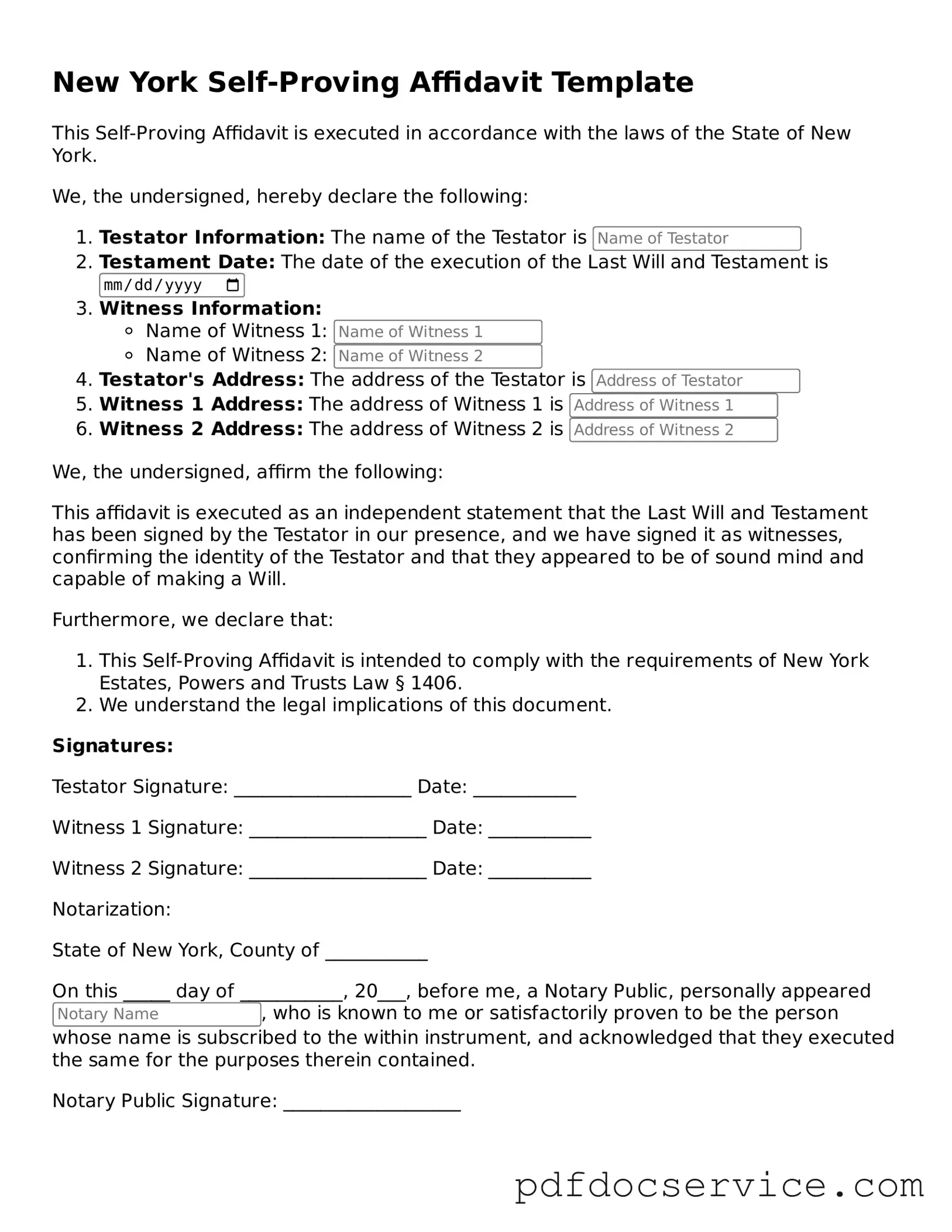What is a New York Self-Proving Affidavit?
A New York Self-Proving Affidavit is a legal document that allows a will to be validated without requiring the witnesses to appear in court. This affidavit is signed by the testator (the person making the will) and the witnesses, affirming that they witnessed the signing of the will.
Why should I use a Self-Proving Affidavit?
Using a Self-Proving Affidavit can simplify the probate process. It saves time and resources by eliminating the need for witnesses to testify about the will's authenticity. This can be particularly beneficial if witnesses are unavailable or if their testimony could complicate matters.
Who can sign a Self-Proving Affidavit?
In New York, the Self-Proving Affidavit must be signed by the testator and at least two witnesses. All parties must be present at the same time when signing the document. It's important that the witnesses are not beneficiaries of the will to avoid any potential conflicts of interest.
How do I complete a Self-Proving Affidavit?
To complete a Self-Proving Affidavit, follow these steps:
-
Ensure the will is properly executed with the testator's signature and signatures of at least two witnesses.
-
Prepare the Self-Proving Affidavit form, including the necessary details about the testator and witnesses.
-
Have the testator and witnesses sign the affidavit in front of a notary public.
Is a Self-Proving Affidavit mandatory in New York?
No, a Self-Proving Affidavit is not mandatory. However, it is highly recommended as it can expedite the probate process and reduce complications later on.
Where do I file the Self-Proving Affidavit?
The Self-Proving Affidavit should be filed with the will in the Surrogate's Court in the county where the deceased resided at the time of death. It is typically submitted during the probate process.
Can I revoke a Self-Proving Affidavit?
Yes, a Self-Proving Affidavit can be revoked. If the testator creates a new will or modifies the existing will, the previous Self-Proving Affidavit becomes invalid. It’s important to ensure that any new documents are properly executed to avoid confusion.
What happens if I don't use a Self-Proving Affidavit?
If you choose not to use a Self-Proving Affidavit, the witnesses may need to be located and called to testify in court during the probate process. This can lead to delays and additional legal expenses.
Can I create a Self-Proving Affidavit without a lawyer?
While it is possible to create a Self-Proving Affidavit without a lawyer, consulting with one is advisable. A lawyer can help ensure that the document is properly prepared and executed, reducing the risk of issues during probate.
How long is a Self-Proving Affidavit valid?
A Self-Proving Affidavit remains valid as long as the will it accompanies is valid. If the will is revoked or deemed invalid, the Self-Proving Affidavit also loses its validity.
